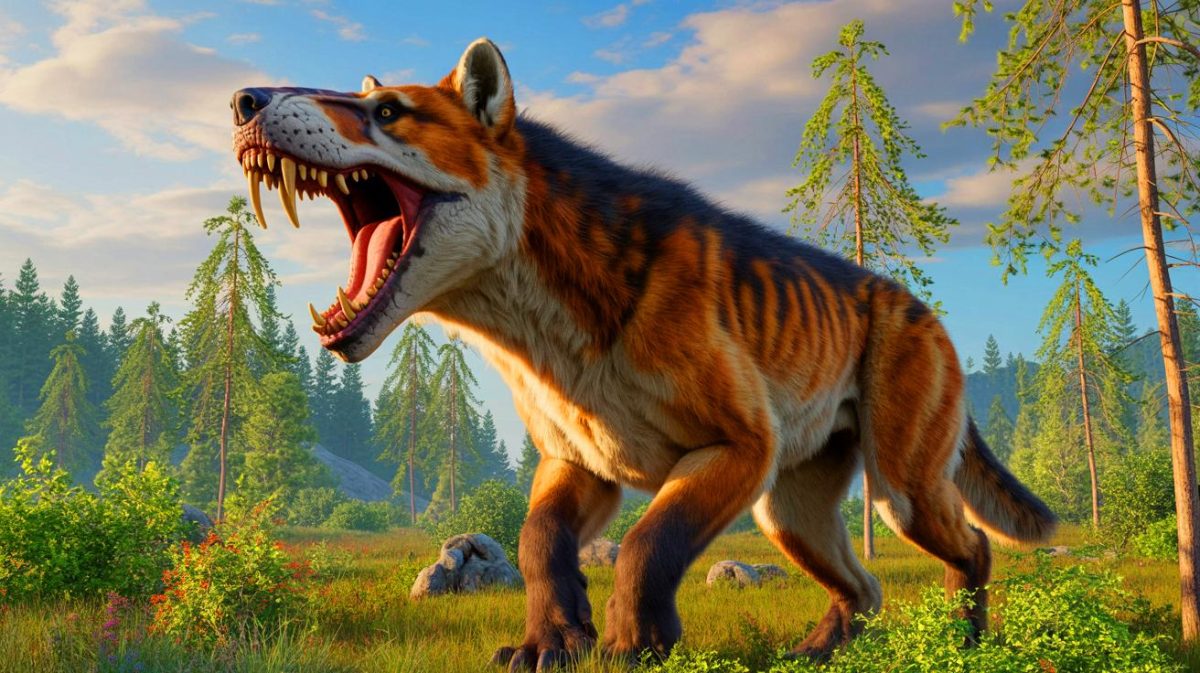| IN A NUTSHELL |
|
Millions of years ago, a remarkable predator roamed the North American landscapes, commanding the ecosystems with its extraordinary prowess. This formidable creature, known as the Epicyon, was not just any canid but the largest one to ever exist. With a jaw capable of crushing bones, the Epicyon thrived for millions of years. Yet, despite its dominance, this giant faced an unexpected challenge that ultimately led to its decline. As we delve into the story of the Epicyon, we uncover the fascinating traits that set it apart and the dramatic changes in the ancient world that shaped its fate.
Epicyon: A Canid Like No Other
Among the diverse array of prehistoric predators, the Epicyon stands out as the most massive canid ever known. Inhabiting North America from the early Miocene to the early Pliocene, this mammal shared little with today’s domestic dogs. Comparable in size to a brown bear, with a skull reminiscent of a lion’s, the Epicyon was part of a now-extinct subfamily of carnivores called borophagines, or “bone-crushing dogs.” These creatures possessed a jaw structure that allowed them to pulverize bones, a trait that distinguished them from modern canids like wolves and coyotes.
The Epicyon’s powerful jaw and carnassial teeth enabled it to access a unique food source—the marrow within the bones of large herbivores. Fossils discovered in the United States and Canada indicate that the Epicyon thrived in diverse environments, from grassy plains to dense forests, ruling over North American ecosystems for nearly fifteen million years. Such adaptability and dominance underscore the Epicyon’s significant role in prehistoric ecology.
A Formidable Predator with Unique Capabilities
Measuring around 8.2 feet in length and weighing approximately 276 pounds, Epicyon haydeni was the largest of the three known species of its genus. Its close relatives, Epicyon aelurodontoides and Epicyon saevus, while smaller, were still formidable carnivores capable of competing with modern wolves in size and strength.
The Epicyon’s anatomy was tailored for hunting large prey. Unlike early borophagines, which moved slowly on flat feet, the Epicyon walked on its toes (digitigrade), a posture that, along with a flexible back and small clavicles, allowed for impressive bursts of speed. Although it lacked the endurance of contemporary wolves, this deadly predator relied on swift, powerful strikes to catch its prey off guard. Primarily a meat-eater, the Epicyon was an hypercarnivore, consuming over 70% animal protein. Its crushing molars, akin to those of hyenas, enabled it to chew and digest solid bones, an advantage unique among canids. Fossil analyses have revealed bone fragments in its fossilized droppings, confirming its extraordinary dietary capabilities. The Epicyon’s prey included massive herbivores like Aepycamelus, a camelid reaching up to 10 feet tall, and Teleoceras, a rhinoceros the size of a hippopotamus.
The Disappearance of the Epicyon: A Lost Battle Against Felines
Despite its prolonged reign, the Epicyon vanished around five million years ago. Its decline coincided with the arrival of a formidable competitor in North America: felines. Originating in Eurasia about 33 million years ago, the Felidae family crossed the Bering Strait, dramatically altering the predator landscape. The arrival of large felines, ancestors to lions and panthers, introduced several advantages over the borophagines. With retractable claws and powerful forelimbs, these cats had a decisive edge in capturing prey.
Some felines, like the saber-toothed cats, developed more efficient attack strategies, delivering fatal bites to the throats of their victims. Gradually, these new hunters supplanted the Epicyon in North American food chains, relegating the last borophagines to an increasingly narrow ecological niche. As the Epicyon and its kin disappeared, other canids adapted by specializing in endurance hunting, giving rise to the ancestors of wolves and domestic dogs. These evolved canids migrated to Eurasia, expanding their territories and leaving a lasting impact on the evolutionary history of canids.
The story of the Epicyon is a captivating chapter in the annals of prehistoric life, illustrating the dynamic interplay of competition and adaptation in the natural world. As we reflect on the rise and fall of this giant canid, we are left to ponder the intricate forces that shape the survival and extinction of species. What other remarkable creatures lie hidden in the depths of our planet’s history, waiting to be discovered?
Did you like it? 4.4/5 (30)








Wow, could you imagine encountering an Epicyon on a hike? 😨